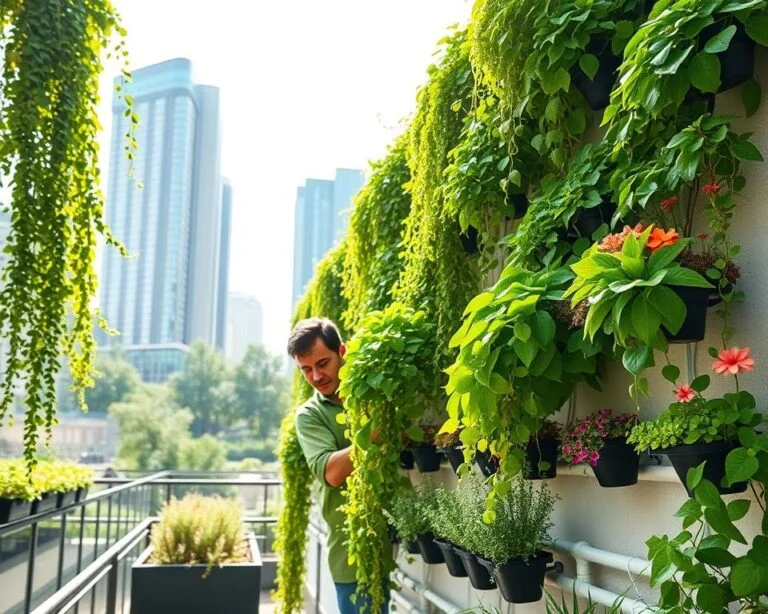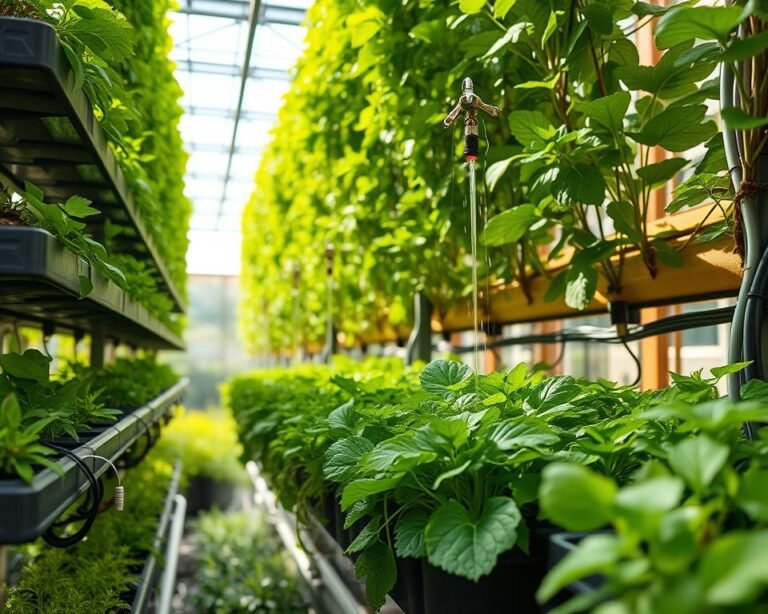Understanding Light Requirement Tips in Container Gardening
Every plant has a story of survival, and light is key. When I started container gardening, I learned light needs are more than just keeping plants alive. they’re essential to helping them thrive. That’s when I started digging into the best light requirement tips for every type of plant.
Container-gardening lets us grow plants in cities, small areas, and tough soil spots. Light needs are like a secret code for plant growth. They decide if your plants will do well or just get by.
Whether you’re growing herbs on a sunny balcony or veggies in a small city garden, knowing about sun is crucial. Your garden’s success depends on how well you understand light and plants.
Key Takeaways
- Light is the most critical factor in plant health and growth
- Container-gardening allows flexibility in plant placement
- Different plants have unique light requirement needs
- Proper sun exposure determines plant productivity
- Urban spaces can support diverse plant cultivation
- Understanding light conditions is crucial for plant success
Basics of Light Exposure for Container Plants
Understanding light exposure is key for a successful container garden. Your plants’ health and growth depend on the right light. Each plant species has its own light needs, crucial for their survival in a container garden.
Light-exposure affects how well your container plants will do. The light’s intensity is vital for photosynthesis and plant growth.
Types of Light Conditions
Container plants fall into four main light groups:
- Full Sun: 6+ hours of direct sunlight daily
- Part Sun: 3-6 hours of direct sunlight
- Part Shade: 3-6 hours of filtered or indirect sunlight
- Full Shade: Less than 3 hours of direct sunlight
Knowing your light conditions helps pick the right plants. You can check light intensity by looking at shadows:
- Strong, well-defined shadow at noon = Bright light
- Weak shadow with recognizable silhouette = Medium light
- Faint shadow without definition = Low light
Pro tip: If you can’t read a book without extra lighting during the day, your space might be too dark. Using grow lights can help meet your plants’ light needs.
Light Requirement Tips for Successful Container Growing

Learning about light is key for a thriving container garden. Your plants need the right amount of natural and artificial light to grow well. The type of container and where you place it can greatly affect the light it gets.
Here are some important tips for managing light:
- Use the USDA Plant Hardiness Zone map to figure out your light conditions
- Look for the best sun and shade spots in your yard
- Move your containers around to get even light
- Put plants that need the same light together
Natural light is the most important for container gardens. South-facing windows get the most light, while north-facing areas get softer light. If natural light is not enough, artificial lighting can help.
For plants that need a lot of light, where you put them matters a lot. Place plants needing lots of light near light sources. If there’s not enough sunlight, use grow lights to make sure your plants get enough light all year.
Pro tip: The intensity of light depends not just on the brightness, but also on the proximity of your plants to the light source.
Seasons change the amount of light available. You might need to move your containers or add extra lighting in the darker months. Watching how your plants react to light will help you improve your gardening.
Choosing Plants Based on Light Availability
Choosing the right plants for your container garden is all about knowing their light needs. Each plant has its own light requirements. These can greatly affect their growth and health.

Your container garden’s success depends on matching plants with the right light. Plants fall into three main light preference groups:
- Low Light Plants: Can survive in very little natural light
- Medium Light Plants: Need indirect sunlight
- Bright Light Plants: Need lots of direct sunlight every day
Matching Plants to Window Orientations
Knowing about window exposure is key to creating the best environment for your plants:
- North-facing windows: Low to moderate indirect light
- Best for Snake Plants
- Ideal for ZZ Plants
- South-facing windows: Bright indirect to full sun
- Perfect for succulents
- Great for Monstera deliciosa
- East-facing windows: Medium bright indirect light
- Suitable for Pothos
- Good for Philodendron
“The right light can transform your plants from surviving to thriving.” – Container Gardening Expert
Using shading techniques can help manage light. Try rotating your plants a quarter turn each week. This helps them grow evenly and prevents them from becoming too leggy.
Light Stress Warning Signs
Look out for these signs that your plants might not be getting the right light:
- Pale or yellowing leaves
- Leggy, stretched growth
- Brown, crispy leaf edges
If natural light is not enough, artificial grow lights can help. LED or fluorescent lights are good options, even in the darker winter months.
Supplemental Lighting Solutions

When natural sunlight is not enough, artificial lighting is key for gardeners. Grow lights help ensure your plants get the light they need to grow well.
LED grow lights have changed how we grow plants indoors. They offer specific lighting for each stage of growth. These lights have big benefits:
- They use less energy
- You can adjust the light spectrum
- They last longer than old lights
- They don’t get as hot
Knowing about the light spectrum is key for growing plants. Different colors of light affect plants in different ways:
| Light Color | Growth Impact | Recommended Stage |
|---|---|---|
| Blue Light (450-495 nm) | Root development | Vegetative stage |
| Red Light (650-665 nm) | Flowering and fruiting | Reproductive stage |
When picking supplemental lighting, think about what your plants need. Full-spectrum bulbs with a color temperature of 5000-6500 K are great for all-around use in container gardens.
Pro tip: Place grow lights at least 12 inches from plants to avoid heat stress and ensure even light.
Using the right artificial lighting can greatly improve your container garden’s health and productivity all year.
Monitoring and Adjusting Light Exposure
Knowing how to watch and change light-exposure is key for good container-gardening. Your plants’ health depends on watching them closely and managing light well. Each plant needs different light at different times.
- Leaf color and texture
- Growth patterns
- Overall plant vigor
Signs of wrong light intensity include:
- Leggy growth meaning too little light
- Pale or yellowing leaves
- Less flowering or fruiting
Light changes a lot during the day and with the seasons. Stock plants need 6-8 hours of sun a day. Indoor plants need 12-16 hours of light to grow well.
| Plant Location | Recommended Daily Light | Key Considerations |
|---|---|---|
| Indoor | 12-16 hours | Use full-spectrum LED grow lights |
| Outdoor | 6-8 hours direct sunlight | Protect from extreme heat with shade cloth |
To get the best light, use grow lights or place containers near south-facing windows. Changing light needs with the seasons is important.
Successful gardeners always watch and adjust their light plans.
Seasonal Considerations for Light Management
Managing sun exposure in your container garden is key. The needs of your plants change with the seasons. You need to adjust your care to help them grow well.
In summer, the sun can harm your plants. Here’s how to protect them:
- Use shade cloths during peak afternoon hours
- Relocate containers to partially shaded areas
- Create temporary barriers with larger plants or screens
Winter brings its own set of challenges. Your plants need extra help to grow well. Try these:
- Position containers near south-facing windows
- Supplement natural light with grow lights
- Rotate plants regularly to ensure even light distribution
Some plants need more light than others. Day-neutral plants like geraniums adjust better to changing light. But long-day plants might find winter days too short. Knowing this helps you create the best environment for your garden all year.
LED grow lights are great for keeping light levels steady. They offer different colors and intensities. This helps your plants thrive, even when natural light is scarce.
Conclusion
Knowing what light your plants need is key to a successful container garden. By managing sunlight, you can make gardens grow well in tough spots. Each plant has its own light needs, from those that like shade to those that need lots of sun.
Your gardening success depends on watching and changing your plants’ light needs. Whether you have a sunny balcony or a shaded patio, you can pick the right plants. Signs like yellow leaves or leggy growth mean you need to adjust the light.
What you’ve learned about light, extra lighting, and changing seasons will help you make your garden come alive. By using these tips, you can turn any space into a green oasis. This shows off the amazing variety of plants you can grow with the right light.
Container gardening is all about knowing and meeting your plants’ needs. With care and attention to light, you can grow a beautiful garden. It will add beauty and happiness to your home, no matter its size or light.







